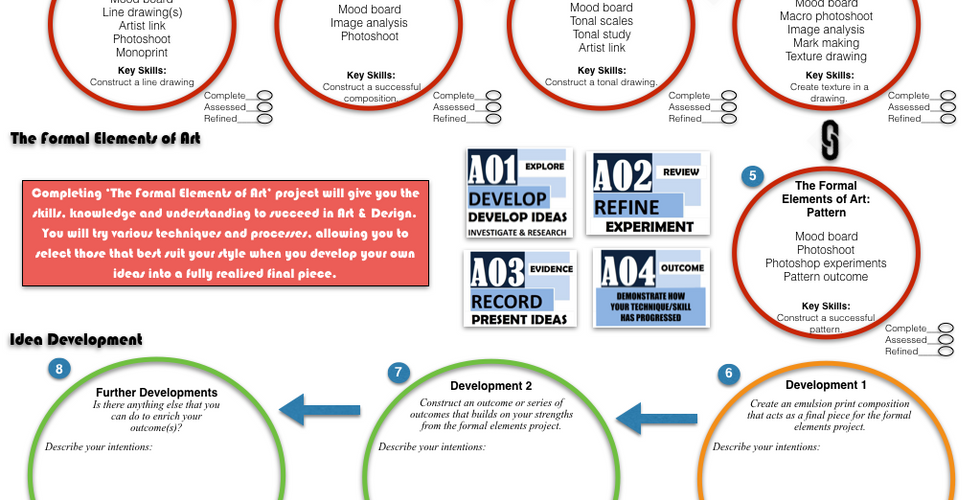The Versatility of the PLC.
- ASA TEEP Teachers

- Nov 25, 2018
- 2 min read
by Ben Capper
Over the last couple of years the Art and Photography department have gone through several iterations of PLCs. Having evaluated their effectiveness and taken into account student voice I believe that our current version is more effective and is capable of allowing students to chart their own route through a project and understand how marks are won and lost.
The previous template that we used for PLCs was a colour coded system that had escalating tasks. Essentially the further up the ladder the students got the better they would do. In theory this sounded great but the layout was overwhelming for students and the statements inside the colour coded boxes did not give advice, they simply stated what to do.

The new layout uses a circular system. Each circle only contains basic information about each task and acts as more of a checklist than a detailed guide. The A Level version that is seen below leaves spaces for the students to write their own thoughts on how they will tackle certain parts of the course. It is crucial that they work independently so I did not want to hamper their creativity by being too prescriptive. GCSE versions of the new look PLCs have more elements that are set in stone.
You can see the new PLC front and back below:
The reverse of the PLC contains the FAR mark sheet and the full assessment criteria. This has allowed for all data pertaining to the students’ progress to be on one document and makes having conversations about progress easier, especially as the students see this document every lesson and as such become very familiar with it.
Given that the PLC itself does not contain as much information I needed a system that allows the students to see exactly what is required of them and also various ways of stretching and challenging themselves. As a result the Art and Photography department now uses the sheets below for each task. These are either given to the students or displayed on the board. The teacher is there to flesh out the information but it gives them a clearer picture of what is expected of them.

Our next goal is to share the task plans via Google Classroom and hyperlink the resources so that students can work even more independently during lessons that allow them access to ICT facilities. The best case scenario is that students are able to carry on at home.
Overall the changes are largely cosmetic but I have been amazed at how much difference it has made. Having the full assessment criteria on the reverse as apposed to a watered down system (I invented a system that worked with the old PLC format) has also proved beneficial as it has removed some grey areas and long term should allow for more accurate forecasting and purposeful feedback as work develops.








Comments